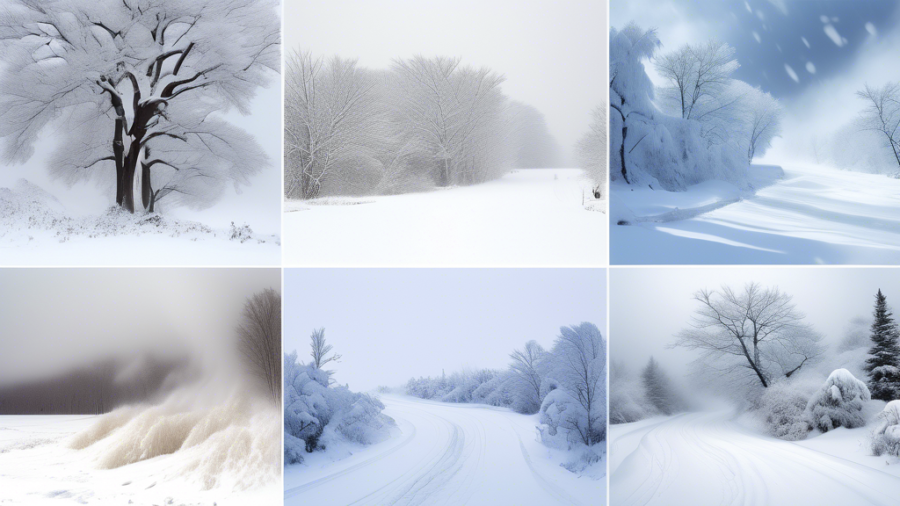Blizzards are one of the most powerful and awe-inspiring natural phenomena on Earth. They can transform a serene winter landscape into a harsh, white wilderness in a matter of hours. Here are ten fascinating facts about blizzards that illuminate these formidable weather events.
1. Definition of a Blizzard
Many people might incorrectly call any heavy snowfall a blizzard, but meteorologists have specific criteria. A blizzard is characterized by strong winds exceeding 35 miles per hour, snow or blowing snow that reduces visibility to less than a quarter mile, and these conditions must persist for at least three hours.
2. Formation Conditions
Blizzards form when cold air, typically from the Arctic, converges with moist air from more temperate regions. This collision often happens at the fronts of low-pressure systems. When combined with the right atmospheric conditions, this cold and moist air can lead to the heavy snow and high winds characteristic of a blizzard.
3. Record-Breaking Blizzards
One of the most infamous blizzards in U.S. history is the Great Blizzard of 1888. It lasted from March 11 to March 14 and paralyzed the Northeast with up to 55 inches of snow in some areas, exacerbated by drifts as high as 50 feet due to the wind.
4. Whiteout Conditions
During a blizzard, whiteout conditions can occur, where the horizon disappears and snow and clouds create a uniform white blanket. In these conditions, orientation becomes extremely difficult, making travel dangerous.
5. Blizzards Aren’t Just Snowstorms
A blizzard is not merely about snowfall. It’s possible for a blizzard to occur without additional snow falling, as long as the conditions meet the necessary criteria. This can happen if strong winds blow already-fallen snow, creating near-zero visibility and treacherous conditions.
6. Areas Prone to Blizzards
Blizzards are most common in the United States’ Great Plains and Midwest, but they can happen in any cold-weather area. Regions near mountains or large lakes also experience frequent blizzards due to orographic lift and lake-effect snow.
7. Global Occurrences
Blizzards aren’t exclusive to the United States. They occur globally, from the Canadian Prairies to the steppes of Russia, and even in some parts of Antarctica. Each region has its unique weather patterns that can lead to blizzard conditions.
8. Historical Impact
Blizzards have significantly impacted human history. For instance, the Armistice Day Blizzard of 1940 in the U.S. caught many by surprise, leading to over 150 deaths. Such severe weather events underscore the importance of weather forecasting and preparedness.
9. Technological Advancements
With the advent of advanced satellite technology and weather modeling, predicting blizzards has become more accurate. Modern meteorologists can provide warnings days in advance, allowing people to prepare and potentially reduce the harmful impacts.
10. Surviving a Blizzard
Surviving a blizzard involves preparation and common sense. Essential steps include staying indoors, keeping a stock of food and water, having a way to stay warm in case of power outages, and avoiding unnecessary travel. For those caught outside, finding or creating shelter and conserving heat are crucial.
Blizzards are a powerful reminder of nature’s might. Understanding these events is key to appreciating and respecting their potential to dramatically alter our environment and lives.


Add a Comment